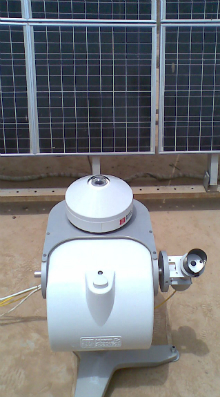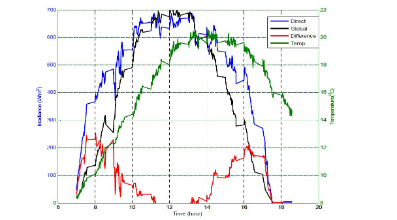UNDP is the United Nations' global development network, an organisation for advocating change and connecting countries to knowledge, experience and resources to help people build a better life. One of UNDP’s challenges is Environment and Energy. The effects of environmental degradation and lack of access to clean, affordable energy supplies is a key problem for developing countries. UNDP helps countries strengthen their capacity to address challenges at the global, national and community levels, seeking out and sharing best practices, providing innovative policy advice and linking partners through pilot projects.
 Iraq has resources of oil and natural gas and there is hydro-electric power from the Tigris and Euphrates rivers. But, there is a shortage of power generation and distribution across the country. However, Iraq has a large amount of sunshine available almost everywhere for generating electricity and heating water. RERC was founded in 2010 for dedicated research activities into renewable energy.
Iraq has resources of oil and natural gas and there is hydro-electric power from the Tigris and Euphrates rivers. But, there is a shortage of power generation and distribution across the country. However, Iraq has a large amount of sunshine available almost everywhere for generating electricity and heating water. RERC was founded in 2010 for dedicated research activities into renewable energy.
The three day visit by Dr. Salih and Dr. Dhahir to the Kipp & Zonen head office was arranged by the UNDP so that they could learn about solar radiation, how to measure it, and to get experience with our instruments, in particular the SOLYS 2 sun tracker and data loggers.
The training was very informative for both parties. They acquired the knowledge to install and operate a complete solar monitoring station. “The installation went smoothly. We are quite experienced with the operation of weather stations and the set-up of the SOLYS 2 is relatively easy.” said Dr. Salih. “We were impressed to see when we toured the factory that the full production process happens at Kipp & Zonen. This visit gave us interesting ideas and inspiration for future projects. Both the people as well as the instruments of Kipp & Zonen are very pleasant to work with.”
Upon their return in Iraq the measurement campaign of direct and global solar radiation started at the University with a SOLYS 2, CHP 1, ventilated CMP 11 and COMBILOG data logger. The data logger is set to register the average data every two minutes. The logged data is analyzed once every two or three months.

Figure 1: Average monthly irradiance in January 2013
In the meantime an important scientific paper has been published that was based on the measurements with the SOLYS 2 solar monitoring station:
Majid Shahatha Salim, Jassim Mohammed Najim, Salih Mohammed Salih, "Maximum power analysis of photovoltaic module in Ramadi city" International Journal of Energy and Environment, Vol. 4, Issue 6, 2013, pp.1013-1024, (2013). http://www.ijee.ieefoundation.org/vol4/issue6/IJEE_08_v4n6.pdf.
Dr. Salih Mohammed Salih says: “Other important papers will be published in international journals based on the SOLYS 2 sun tracker system. It is the first solar monitoring station in Iraq that gives real-time sun irradiance data at a local site. Another one will be installed in another place shortly in order to get the real solar radiation map in the Anbar province of Iraq.
The University of Anbar website is at http://www.uoanbar.edu.iq/index.en.htm.
Find out more about UNDP and its global activities at www.beta.undp.org.